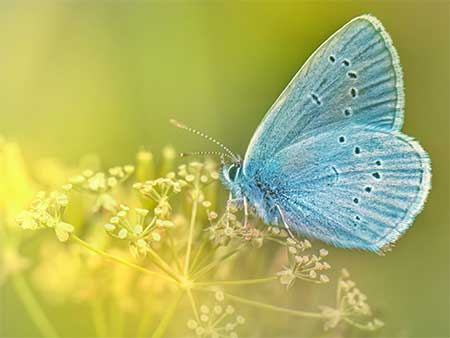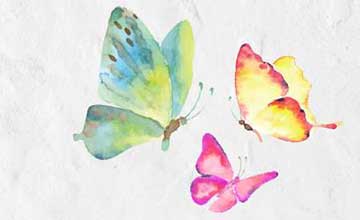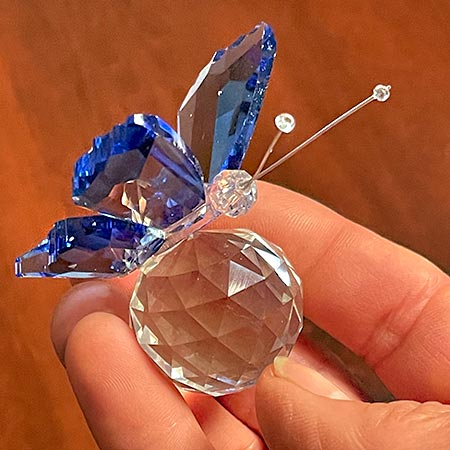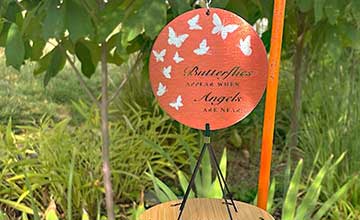When you see a blue butterfly, like an Eastern-Tailed Blue or Pipevine Swallowtail, you might wonder if there is a meaning behind what you see. Read on to learn more about blue, the most popular color in the world, and what it could mean when a blue butterfly crosses your path.

Table of contents
Spiritual Meaning of Blue Butterflies
Blue butterflies have a spiritual meaning for many people – azure skies and cerulean water evoke a sense of peace and receptiveness. Large areas of blue are calming, offering spiritual depth and opening us up to life’s energy flow.
Blue plants and animals are uncommon and often stand out from their surroundings, so it’s tempting to ascribe them to special spiritual meanings. For instance, forget-me-nots and violets have long been symbols of faithfulness, while bluebirds signify joy and freedom.
The Dependability of Blue
Navy blue is a reliable, stable color, often used in official capacities to signal confidence and peace. Blue is used in logos to project a sense of expertise, truth, and calm. Blue is also popular for police uniforms because it is a non-threatening color associated with authority.
Shop for Blue Butterfly Gifts
Enjoying our content? You can support us by shopping on Amazon through the links provided on our site. We earn a small commission on qualifying purchases, and every penny helps us keep creating more of what you love.
Feeling Blue
Although blue skies are ‘happy’ skies, the day turns to blue twilight sooner or later. Calmness can give way to sadness, and peace tingles with dreamy melancholy. For many, blue is a sad and wistful color. Just think of Pablo Picasso’s Blue Period, when he began to paint monochrome portraits of the poor after learning of his friend’s death and falling into a depression. These paintings did not sell well during his time. Today, blue continues to resonate as an exceptionally emotional color.
History of Blue
Throughout history, blue has been held in high esteem. Egyptians were the first to manufacture blue pigment, which was popular for symbolizing the heavens and the river Nile with its patterns of birth and rebirth. Fertility or protection amulets were often blue, and gods were sometimes depicted as having blue skin.
In the early Middle Ages, ordinary people wore blue clothes made using poor-quality dyes. But the status of blue changed after the Saint-Denis Basilica was built in the 12th century. Its renowned blue stained glass helped elevate the status of this color. Over time, blue became the color of wealth, and in specific eras, France and Italy allowed only noble families to wear the color. Eventually, an indigo dye made it possible for the masses to wear blue, leading eventually to the blue jeans popular today.
In the history of painting, blue paint rarely came cheap. At one point, the ultramarine pigment was more expensive than gold. For that reason, it was often reserved for special subjects. For instance, it was widely used to depict the Virgin Mary’s robes, which led to connotations of holiness, virtue, and humility.
Last update on 2025-12-14 / Affiliate links / Images from Amazon Product Advertising API

















